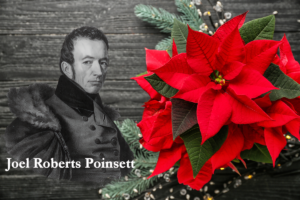In the Christian world, no holiday is associated with more traditions than Christmas and the weeks surrounding it. In fact, the phrase, “’tis the season,” has itself become a tradition. According to staff at Word Genius, “For such a common saying, it’s easy to forget just how old it is. ‘Tis is a contraction for ‘it is,’ and was popular in everyday speech in the 1700s. So, if you want to make the holiday season a little more genteel and old fashioned, this phrase would definitely work.”[1] On the other hand, the staff notes that the phrase “season’s greetings” is more modern. They write, “As Americans have become more inclusive and understanding of the fact that not everyone celebrates Christmas, phrases like ‘season’s greetings’ have become increasingly popular. When you’re in an environment where people might be celebrating Hanukkah, Kwanzaa, or Winter Solstice, this is a welcome acknowledgment. Although it doesn’t have a storied past, it holds an important place in the holiday seasons of the present and the future.” Since this IS the season. Let’s look at a few more holiday traditions and their origins.
Gift Giving
Aside from nativity stories and scenes depicting the religious origins of Christmas, gift giving is perhaps the most ubiquitous tradition associated with the holiday season. The editorial staff at The Week explains, “Christians see gift giving as a symbolic homage to the Three Wise Men’s tributes to the baby Jesus. In the New Testament, the Magi are described as honoring the newborn Savior with valuable gifts of gold, frankincense, and myrrh.”[2]
Santa Claus
A later addition to the gift giving tradition was Saint Nicholas (aka Santa Claus). Santa Claus has become a worldwide sales phenomenon who hypes everything from cars to candies. His rise to “Best Salesman in History” status didn’t happen overnight. His story began over 1600 years ago in a city called Myra, in what is now modern-day Turkey. The St. Nicholas Center explains:
“The true story of Santa Claus begins with Nicholas, who was born during the third century in the village of Patara. At the time the area was Greek and is now on the southern coast of Turkey. His wealthy parents, who raised him to be a devout Christian, died in an epidemic while Nicholas was still young. Obeying Jesus’ words to ‘sell what you own and give the money to the poor,’ Nicholas used his whole inheritance to assist the needy, the sick, and the suffering. … One story tells of a poor man with three daughters. In those days a young woman’s father had to offer prospective husbands something of value — a dowry. … This poor man’s daughters, without dowries, were therefore destined to be sold into slavery. Mysteriously, on three different occasions, a bag of gold appeared in their home-providing the needed dowries. The bags of gold, tossed through an open window, are said to have landed in stockings or shoes left before the fire to dry. This led to the custom of children hanging stockings or putting out shoes, eagerly awaiting gifts from Saint Nicholas. Sometimes the story is told with gold balls instead of bags of gold. That is why three gold balls, sometimes represented as oranges, are one of the symbols for St. Nicholas. And so St. Nicholas is a gift-giver.”[3]
St. Nicholas’ ties with gift-giving in America were cemented in the poem entitled “A Visit From St. Nicholas” (better known to many of us as “‘Twas the Night Before Christmas,”) which was first published in New York’s Troy Sentinel on December 23, 1893. The poem has been traditionally attributed to Clement Clarke Moore but the ancestors of Henry Livingston, Jr., have made a strong case for his authorship.
Christmas Trees
After Santa Claus, the most celebrated holiday tradition is the Christmas tree. The evergreen trees we associate with the Christmas holiday became a tradition in Europe. According to History.com, “The history of Christmas trees goes back to the symbolic use of evergreens in ancient Egypt and Rome and continues with the German tradition of candlelit Christmas trees first brought to America in the 1800s.”[4] Some stories credit the reformer Martin Luther with starting the tradition. Freelance writer Manasa Reddigari explains, “Legend has it that while walking home from the woods one winter’s night in the 16th century, Martin Luther was so moved by the sight of the stars shining above the evergreens that he recreated the shimmering spectacle at home by adding small lit candles to the branches of a fir tree he personally cut down.”[5]
According to the editors at History.com, the tradition of decorating with evergreens started much early with the Romans, the Druids, and the Vikings. They explain the Romans “decorated their homes and temples with evergreen boughs” as part of the Saturnalia feast honoring Saturn, the gold of agriculture. The Druids “also decorated their temples with evergreen boughs as a symbol of everlasting life.” And, “the fierce Vikings in Scandinavia thought that evergreens were the special plant of the sun god, Balder.” The editors agree, however, that, whether Martin Luther was involved or not, “Germany is credited with starting the Christmas tree tradition as we now know it in the 16th century when devout Christians brought decorated trees into their homes.” Freelance writer Alex Shute adds this tidbit: “The earliest trees were known as ‘paradises’ from the paradise trees used in a play on the feast of Adam and Eve.”[6] Not surprisingly, these paradise trees often had apples placed in their branches, which were later replaced by red glass Christmas tree decorations.
Christmas Carols
Singing has also become a cherished tradition during the holiday season. Carols were first sung to express joy about the birth of Jesus. In more modern times, secular “carols” have been added to most celebrants’ playlist. Journalist Nora Loreto writes, “Most people might not count ‘All I Want for Christmas Is You’ or ‘Fairytale of New York’ among the traditional canon of Christmas music. But both these songs, in their joyousness, expressions of love and longing, catchiness, and even the drunkenness of the latter, are closer to the origins of Christmas carols than you might expect.”[7] She adds, “To some, the secular is profane at Christmas, making the holiday a perennial site for debates over how it should be celebrated.” Nevertheless, secular Christmas songs have become as much of a tradition as Santa Claus and Christmas trees. Loreto traces the earliest carols back hundreds of years. “Carols have long been fundamental to celebrating the Christmas season,” she writes, “and, as such, evolved through generations of swinging cultural norms. The traditional carols we know today can be traced back to the carol revival of the early to mid-1800s — from music that had been sung for centuries before. But they are also relatively new: it is thought that there were virtually no carols before the year 1200.”
According to Loreto, we almost lost many traditional carols when, in 1647, “England’s puritan parliament banned Christmas Day festivities, among other celebrations. It was probably the closest one has ever been to an actual war on Christmas. It was waged by Protestants, puritans in particular, against a holiday that had become known for its drunkenness and debauchery and its association with Catholicism. The ban even included private celebrations at home and triggered riots against the government.” She notes, “Carols and other Christmas traditions had to go underground.” Fortunately for us, those traditions were saved.
Concluding Thoughts
No matter the kinds of holiday traditions you and your family observe to celebrate the holiday season, they should be cherished. Traditions create memories. They make occasions special. And they connect generations past, present, and future. So, this Christmas, buy some new pajamas, tell ghost stories, sing songs, decorate your home, and eat well. Also remember that most of your traditions are possible because supply chain professionals worked hard to ensure you had the tinsel, the toys, and the turkeys available for your use. Happy Holidays!
Footnotes
[1] Staff, “7 Classic Christmas Sayings and Where They Came From,” Word Genius, 17 December 2019.
[2] Staff, “A brief history of the Christmas present,” The Week, 20 December 2014.
[3] Staff, “Who is St. Nicholas?” The St. Nicholas Center.
[4] Staff, “History of Christmas Trees,” History.com, 8 December 2021.
[5] Manasa Reddigari, “20 Surprising Stories Behind Popular Christmas Decorations,” Bob Vila website.
[6] Alex Shute, “Christmas: History, Traditions, And Celebrations,” Faith Giant, 17 December 2020.
[7] Nora Loreto, “The Surprising History of Christmas Carols,” The Walrus, 20 December 2022.





